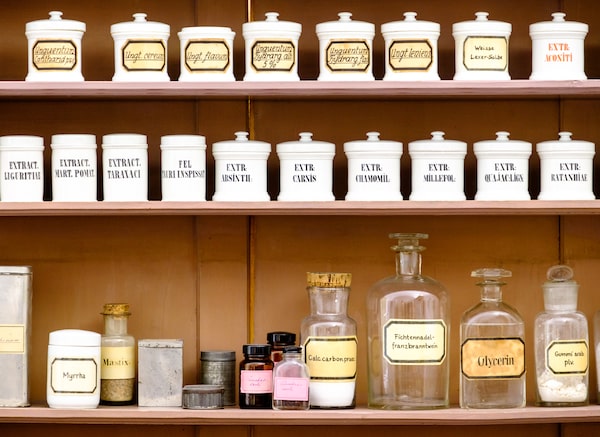
FooTToo
When Gucci teased a few images last month announcing its new luxury collection of floral waters and perfumes, The Alchemist’s Garden, the Instagram account Estée Laundry took notice. Run by a group of self-described “anonymous beauty insiders,” and much like fashion watchdog @DietPrada, the account’s scathingly honest commentary calls out cosmetics players for such things as sexist ads, improbable treatment claims, cultural appropriation and copycatting.
“We don’t think these are copies per se,” Estée Laundry wrote, “but does #Gucci’s new fragrance line feel like a bougie, gaudy version of fellow Italian heritage brand #SantaMariaNovella1612?” The contention prompted Rafael Bastos, the London-based business manager for Gucci Beauty, to respond to the comments in protest. In one of his several replies, Bastos scoffed: “Inspired in Renaissance. I can assure you we didn’t copy those clunky and odd looking things.”
As other observers, dubbed #Laundrites, swiftly pointed out, Gucci’s elegant throwback is less Santa Maria Novella’s understated apothecary flasks and more L’Officine Universelle Buly 1803, the historic French brand recently recreated by Victoire de Taillac and Ramdane Touhami. They were inspired after reading an 1837 Honoré de Balzac novel about a riches-to-rags, celebrity Parisian apothecary and perfumer, and revived the brand of the novel’s real-life inspiration, Jean-Vincent Bully.
In keeping with Gucci creative director Alessandro Michele’s flair for giving a modern, madcap twist to diverse elements of history, from Ancient Rome to Regency England, The Alchemist’s Garden is inspired by the traditional look of herbalists and apothecaries. In the distant past, chemists, or pharmacists, mixed herbal remedies on demand and relied on Greek and Arabic texts for recipes of tinctures and potions that would ward off the pox, disinfect during the plague, fragrantly mask malodorous hygiene, and address other ailments – like a broken heart – with dubious curative powers.
After the Renaissance, perfume houses established themselves as separate entities and the distinction between genuine medical treatments and ineffective elixirs that smelled nice was blurred. Early 20th-century perfumer François Coty, for example, learned how to compose fragrances while working in a pharmacy making lotions.
The new Gucci perfume oils – lavender, cypress, oud and rose – are housed in squat jade-green and lapis-blue bottles with flat stoppers and pipette-style glass applicators that recall vintage opaline glass, and are adorned with floral coronets and stylized slithering snakes. Similar ceramic apothecary containers that traditionally stored crude drugs, liquids and ointments – basically the medieval version of Costco bulk – have for centuries featured baroque and rococo motifs such as shields, birds, festoons, ribbons and crowns.
As with all luxury packaging, the perfume bottles are designed to romance the customer and begin the experience before smelling the first drop. It’s a long-established tradition, but the one thing Estée Laundry’s commenters got right is that you can thank Santa Maria Novella for popularizing it.
The venerable Florentine apothecary brand marks an important anniversary this year. The pharmacy may have been founded by monks in 1612, but its turning point came in 1989, when engineer Eugenio Alphandery, now co-owner, bought a stake from the family of the company’s last monastic director. He streamlined the still largely handmade processes and scaled up operations and output while retaining the packaging’s old-fashioned heraldic shields, curlicues and armorial lettering. The careful and nearly invisible modernization put the brand on the luxury map for tourists and perfume aficionados alike.
Part of a complex founded by Dominican friars in the 13th century, Santa Maria Novella’s Florence flagship, on a now-grubby side street near the city’s central train station, remains a tourist highlight. It’s something of a pilgrimage, and in spite of all the publicity, the shop still feels like a whispered discovery. The grand main room has a vaulted ceiling and is surrounded by smaller chambers, including a tea room, a sacristy and, yes, even a traditional herbalist. Stepping off the street into the marble corridor, one is welcomed by centuries of accumulated scent.
The antique ceramics that line the heavy walnut display cases are in a common style that dates back to the Renaissance. There are similar majolica artifacts in the Metropolitan Museum of Art’s renowned collection, tin-glazed earthenware adorned with illustrations of snakes, sunbursts or scenes from mythology, such as a dragon-headed creature known as a biscione, gobbling up a child.
The Alchemist’s Garden may be the most glamorous version to date, but Michele and the Gucci team didn’t invent them – nor did Monsieur Bully, or SMN. The same throwback design vocabulary, which already appears on everything from craft liquor-bottle labels to Rifle Paper Co.’s limited edition Valentine’s Day packaging for L’Occitane hand cream, suggests a medicinal undercurrent.
But it’s not nostalgia that sells it. Through packaging, these products speak to the present moment by suggesting some similar measure of psychological comfort. Apothecary products were originally created to cure both physical diseases and emotional “griefes” – and that overlaps nicely with what’s now a US$4.2-trillion global wellness economy.
The apothecary aesthetic appeals to the current obsession with wellness because it oh-so-subtly signals healthy living. Even in luxury livery, the pseudo-pharmaceutical packaging is a visual cue that the tonics and perfumes they contain are preparations necessary for physical, mental and spiritual well-being, rather than merely products.
Visit tgam.ca/newsletters to sign up for the weekly Style newsletter, your guide to fashion, design, entertaining, shopping and living well. And follow us on Instagram @globestyle.
 Nathalie Atkinson
Nathalie Atkinson